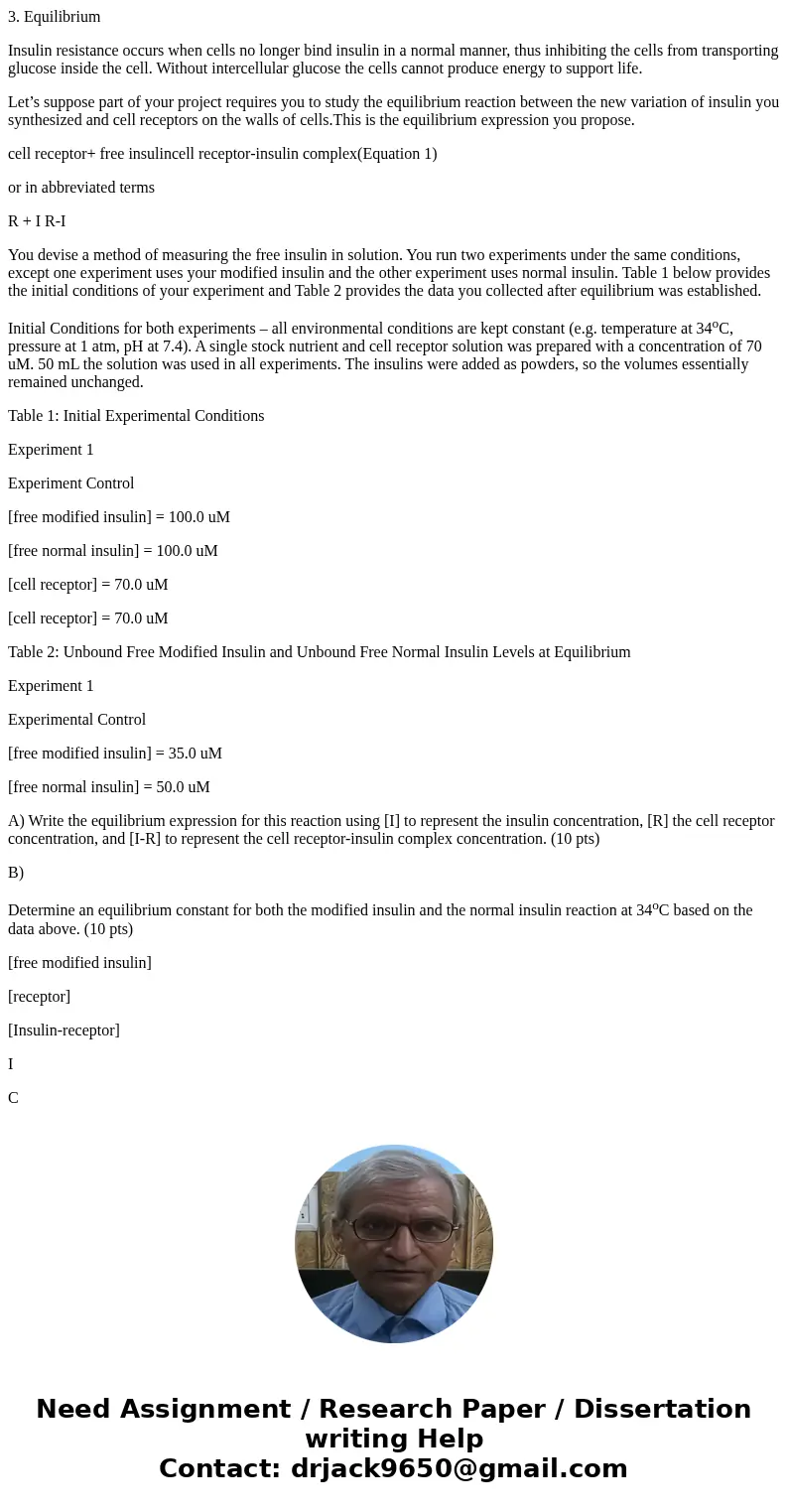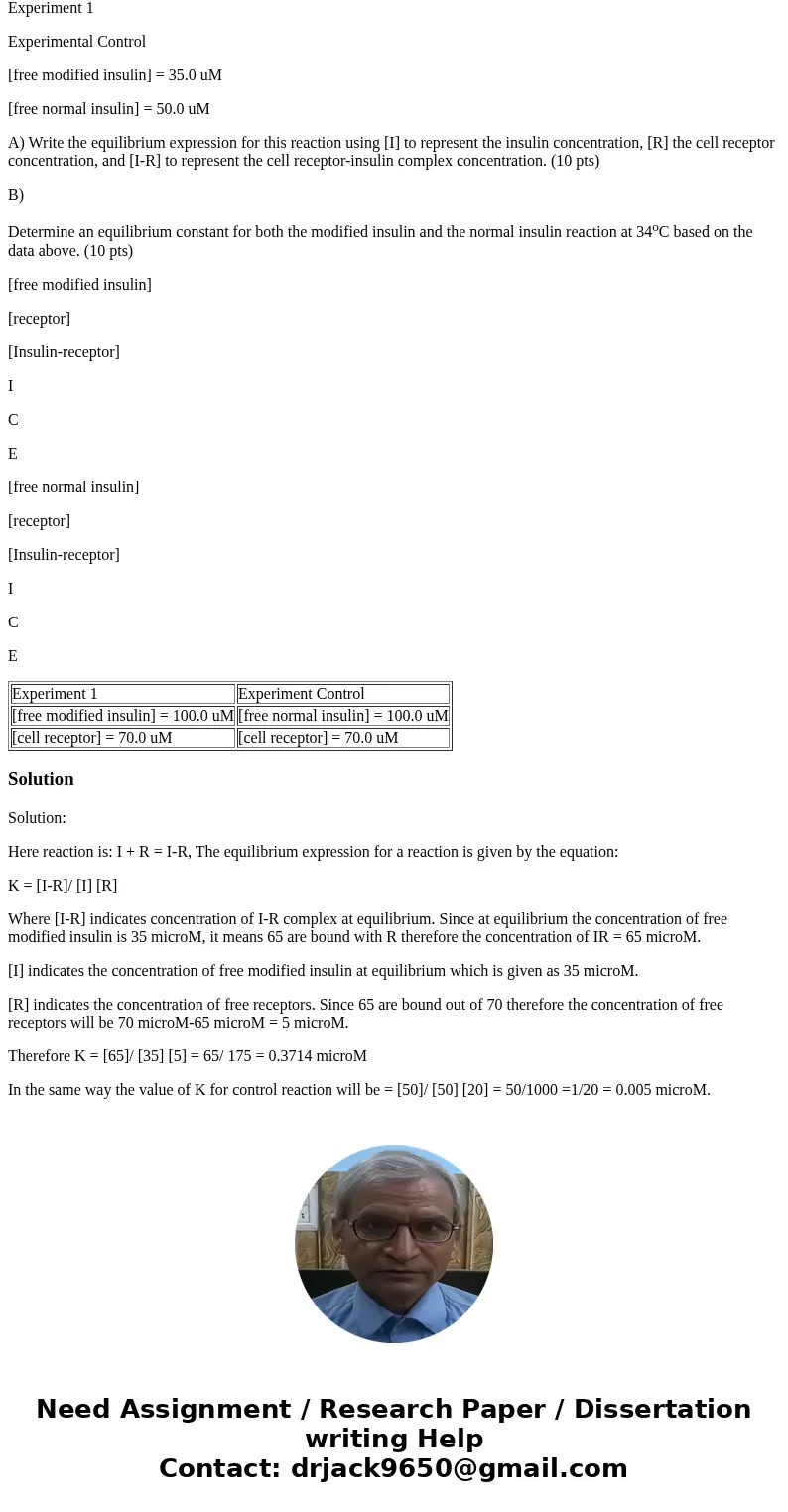3 Equilibrium Insulin resistance occurs when cells no longer
3. Equilibrium
Insulin resistance occurs when cells no longer bind insulin in a normal manner, thus inhibiting the cells from transporting glucose inside the cell. Without intercellular glucose the cells cannot produce energy to support life.
Let’s suppose part of your project requires you to study the equilibrium reaction between the new variation of insulin you synthesized and cell receptors on the walls of cells.This is the equilibrium expression you propose.
cell receptor+ free insulincell receptor-insulin complex(Equation 1)
or in abbreviated terms
R + I R-I
You devise a method of measuring the free insulin in solution. You run two experiments under the same conditions, except one experiment uses your modified insulin and the other experiment uses normal insulin. Table 1 below provides the initial conditions of your experiment and Table 2 provides the data you collected after equilibrium was established.
Initial Conditions for both experiments – all environmental conditions are kept constant (e.g. temperature at 34oC, pressure at 1 atm, pH at 7.4). A single stock nutrient and cell receptor solution was prepared with a concentration of 70 uM. 50 mL the solution was used in all experiments. The insulins were added as powders, so the volumes essentially remained unchanged.
Table 1: Initial Experimental Conditions
Experiment 1
Experiment Control
[free modified insulin] = 100.0 uM
[free normal insulin] = 100.0 uM
[cell receptor] = 70.0 uM
[cell receptor] = 70.0 uM
Table 2: Unbound Free Modified Insulin and Unbound Free Normal Insulin Levels at Equilibrium
Experiment 1
Experimental Control
[free modified insulin] = 35.0 uM
[free normal insulin] = 50.0 uM
A) Write the equilibrium expression for this reaction using [I] to represent the insulin concentration, [R] the cell receptor concentration, and [I-R] to represent the cell receptor-insulin complex concentration. (10 pts)
B)
Determine an equilibrium constant for both the modified insulin and the normal insulin reaction at 34oC based on the data above. (10 pts)
[free modified insulin]
[receptor]
[Insulin-receptor]
I
C
E
[free normal insulin]
[receptor]
[Insulin-receptor]
I
C
E
| Experiment 1 | Experiment Control |
| [free modified insulin] = 100.0 uM | [free normal insulin] = 100.0 uM |
| [cell receptor] = 70.0 uM | [cell receptor] = 70.0 uM |
Solution
Solution:
Here reaction is: I + R = I-R, The equilibrium expression for a reaction is given by the equation:
K = [I-R]/ [I] [R]
Where [I-R] indicates concentration of I-R complex at equilibrium. Since at equilibrium the concentration of free modified insulin is 35 microM, it means 65 are bound with R therefore the concentration of IR = 65 microM.
[I] indicates the concentration of free modified insulin at equilibrium which is given as 35 microM.
[R] indicates the concentration of free receptors. Since 65 are bound out of 70 therefore the concentration of free receptors will be 70 microM-65 microM = 5 microM.
Therefore K = [65]/ [35] [5] = 65/ 175 = 0.3714 microM
In the same way the value of K for control reaction will be = [50]/ [50] [20] = 50/1000 =1/20 = 0.005 microM.


 Homework Sourse
Homework Sourse